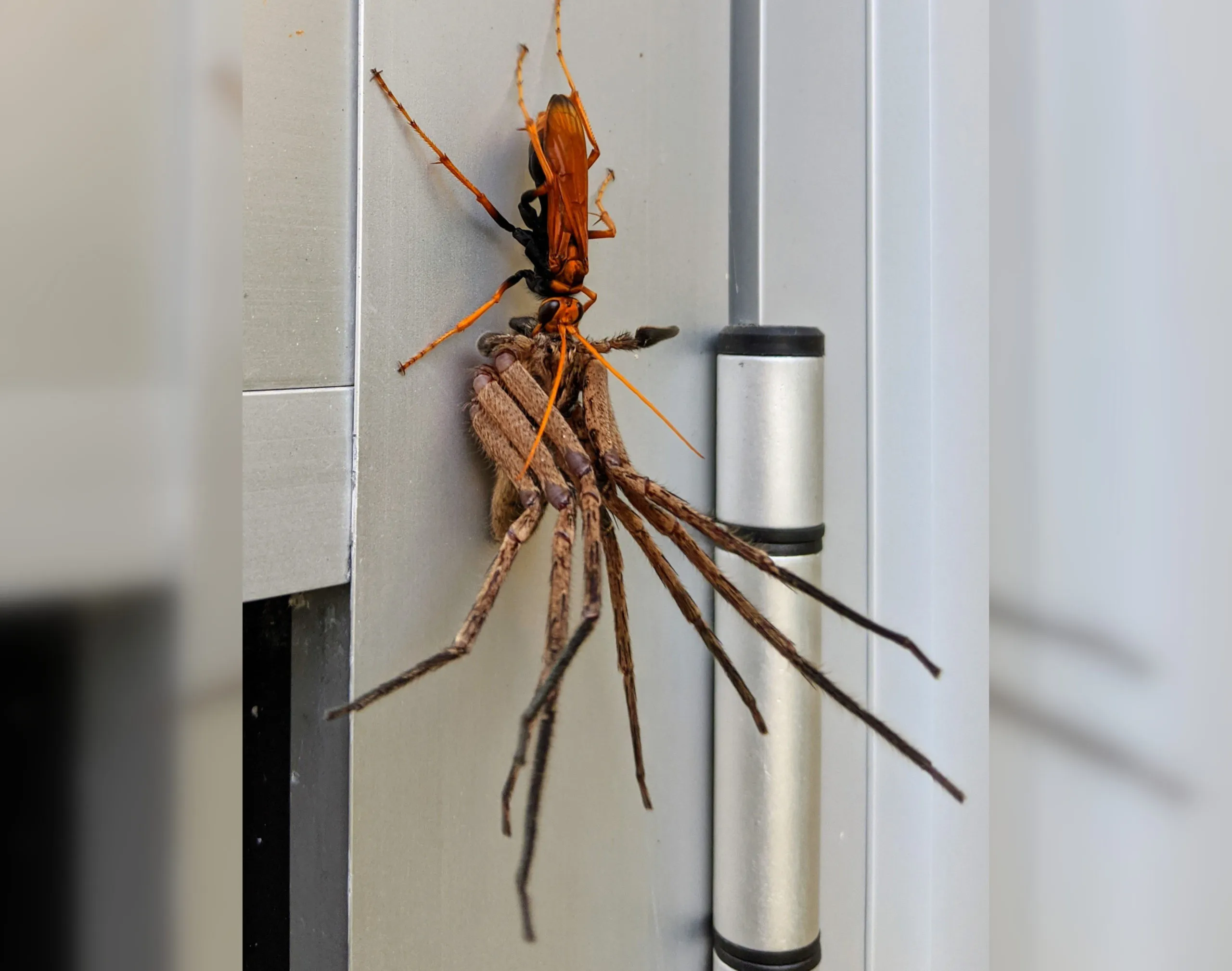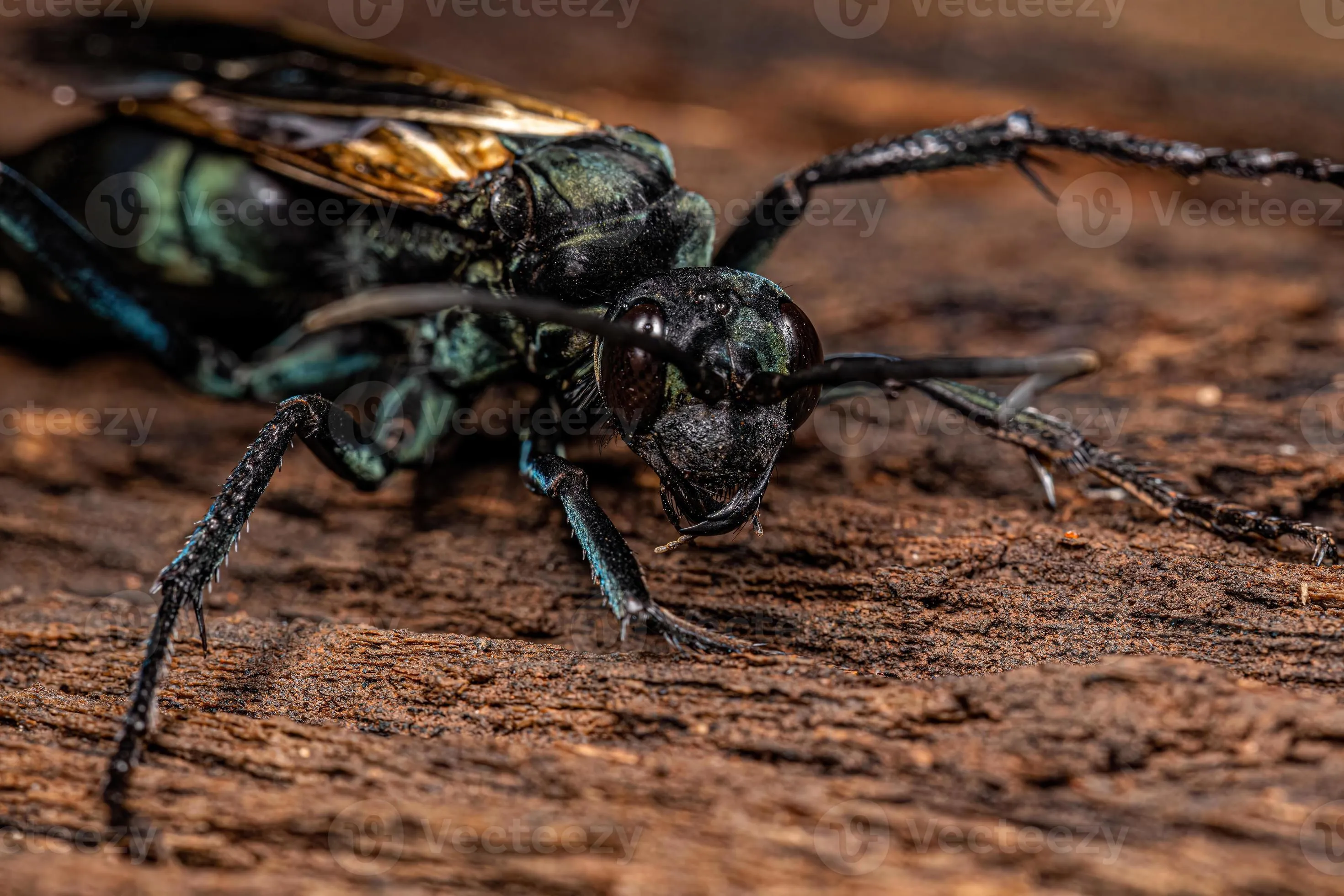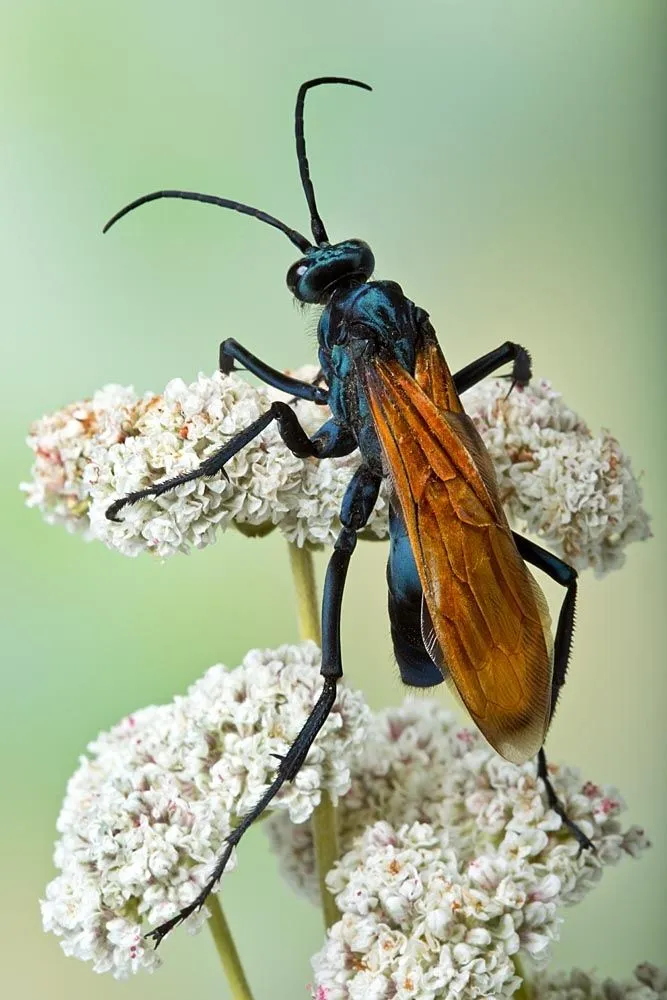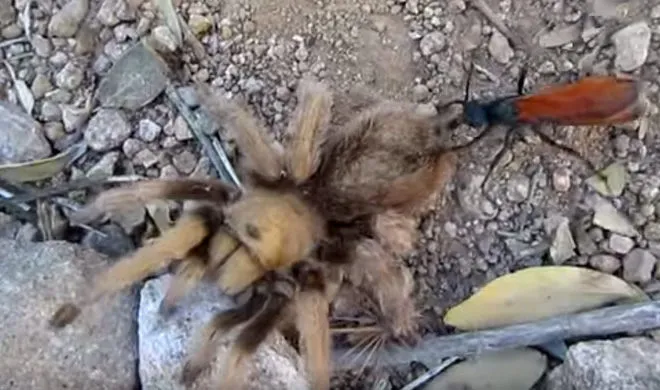What is a Tarantula Hunting Wasp (and Why Should You Care)
The tarantula hunting wasp, belonging to the genus Pepsis, is a fascinating and formidable predator found in various parts of the world. These wasps are renowned for their hunting prowess, specifically targeting tarantulas. These wasps are among the largest wasps on Earth, showcasing vibrant colors and a remarkable ability to subdue their much larger prey. Understanding the tarantula hunting wasp is crucial for appreciating the intricate balance of ecosystems, the strategies nature employs for survival, and the power of specialized adaptations. Their existence tells a tale of the continuous struggle for life, where both predator and prey have evolved to survive, making them a captivating subject of study for anyone interested in the natural world.
The Tarantula Hunting Wasp Life Cycle
The life cycle of the tarantula hunting wasp is a remarkable display of nature’s precision. It begins with the adult wasp, which, after mating, searches for a tarantula. Once a tarantula is located, the wasp engages in a daring hunt, ultimately stinging and paralyzing the spider. The wasp then drags the paralyzed tarantula to a pre-prepared nest or burrow. In this safe haven, the wasp lays a single egg on the tarantula’s abdomen. The egg hatches into a larva, which feeds on the paralyzed tarantula, acting as a living larder. The larva grows, molting several times before pupating within a cocoon. Finally, it emerges as an adult wasp, ready to begin the cycle anew. This lifecycle emphasizes the wasp’s predatory role and the delicate balance of their ecosystem.
Finding the Right Habitat

To understand the hunting behavior of these wasps, one must consider their habitat. Tarantula hunting wasps thrive in warm, arid environments, such as deserts, scrublands, and grasslands where tarantulas are also abundant. These areas typically offer an abundance of suitable nesting sites, which can include burrows in the ground, crevices in rocks, or even abandoned rodent burrows. The presence of wildflowers and other nectar sources is crucial for the adult wasps’ survival, as they feed on nectar for energy. The wasp’s habitat also impacts its hunting strategies, as they adapt to the terrain when tracking down their prey. Identifying these habitats is key for observing these amazing creatures in their natural environment.
Identifying Tarantula Hunting Wasp Nests
Identifying the nests of tarantula hunting wasps can provide valuable insights into their behavior and lifecycle. These wasps often create nests in pre-existing burrows or excavate their own in the soil, usually near the ground. The entrances to these nests are often marked by a small mound of excavated soil, and may be difficult to spot at first. The nests themselves are typically simple chambers, designed to house a single paralyzed tarantula and the wasp larva. Being able to identify these nests is very important if one wishes to study them safely without disturbing the wasps. You can typically find these nests in areas with a high density of tarantulas, such as near rocky outcroppings or under the cover of vegetation where these wasps can nest in peace.
Nesting Locations
Tarantula hunting wasps are strategic in their selection of nesting locations, often choosing sites that offer protection from the elements and predators. Common nesting sites include sandy or loamy soils, which are easy to excavate. These wasps will often create nests in areas under rocks, among the roots of plants, or in abandoned animal burrows. The location also impacts hunting success, as proximity to tarantula habitats is paramount. Furthermore, wasps will often make their nests with a high level of camouflage so as not to attract the attention of any predators. The choice of nesting site reflects the wasp’s survival strategy, ensuring the safety of their offspring and the success of the next generation.
Prey Selection

Tarantula hunting wasps, as their name suggests, are highly specialized predators, with tarantulas forming the primary part of their diet. While they may occasionally target other large spiders, tarantulas are their preferred prey. The choice of tarantulas may vary based on region, with the wasp selecting the species most prevalent in its habitat. The wasps are not particularly picky when it comes to which tarantulas they hunt, and will hunt any tarantula that they can successfully paralyze. The size of the tarantula does not matter to the wasp either, with it only being dependent on the wasp’s strength. The selection of prey is a key aspect of their hunting strategy, ensuring that the wasp’s offspring have a sufficient food source to develop.
The Hunting Strategy
The hunting strategy of a tarantula hunting wasp is a remarkable display of instinct and precision. The wasp will search for tarantulas on the ground, often by sight and scent, approaching the spider with caution. It then provokes the spider and stings it at a specific nerve ganglion, injecting a paralyzing venom. The wasp must avoid being bitten or stung by the tarantula, which is where the wasp’s speed comes into play. Once the tarantula is paralyzed, the wasp drags its prey to a prepared nest. This demanding task may involve carrying the tarantula over long distances and uneven terrain. This hunt exhibits the wasp’s specialized adaptation for prey capture and ensuring the survival of its offspring.
Paralyzing the Tarantula
Paralyzing the tarantula is one of the most critical aspects of the wasp’s hunting process. The wasp targets the tarantula’s nerve ganglia, injecting venom that induces paralysis without killing the spider. This allows the tarantula to remain fresh and alive, ensuring a food source for the wasp larva. The precision in the sting location is crucial, as the venom must effectively immobilize the tarantula without causing irreversible harm. The wasp employs a combination of instinct and expertise, often stinging the tarantula in multiple locations to ensure complete paralysis. The wasp usually aims for the tarantula’s underside, where the nerve ganglia are located. This entire process is both fascinating and crucial for the wasp’s survival.
Transporting the Prey

Transporting the paralyzed tarantula to the nest is a task that demonstrates the strength and determination of the tarantula hunting wasp. The wasp is often significantly smaller than the tarantula, making this undertaking all the more impressive. It typically drags the tarantula across the ground, often using its mandibles to grip the spider’s legs or body. This process is arduous, requiring the wasp to navigate obstacles and uneven terrain. The wasp must also be careful to avoid attracting other predators, such as ants. The successful transport of the tarantula is crucial for providing the larva with a secure food source and shelter. The effort that the wasp puts into this task is a testament to its survival instinct.
Laying the Eggs
Once the paralyzed tarantula is safely in the nest, the tarantula hunting wasp lays a single egg on the spider’s abdomen. The choice of location for the egg is critical, as it must be accessible to the larva once it hatches, while also being protected. The wasp carefully places the egg, ensuring it is firmly attached to the tarantula’s body. The egg is small and oval-shaped, representing the beginning of the next generation. The wasp will then seal the nest, leaving the tarantula and the egg undisturbed. This action signifies the completion of the hunting and nesting process, and the beginning of the larvae’s development.
How the Larvae Develop
Once the egg hatches, the larva of the tarantula hunting wasp begins its development. The larva is a small, grub-like creature that feeds voraciously on the paralyzed tarantula. It starts by consuming the less vital parts of the tarantula, gradually working its way towards the more important organs. As the larva grows, it molts several times, shedding its exoskeleton to allow for further growth. The feeding process continues for several weeks, with the larva growing larger and more robust. The larva then spins a cocoon, in which it pupates, transforming into an adult wasp. The entire process, from egg to adult, is a testament to the remarkable life cycle of the tarantula hunting wasp.
What the Larvae Eats

The larva of the tarantula hunting wasp relies entirely on the paralyzed tarantula as its food source. The larva consumes the spider from the inside out, starting with the less vital parts and moving towards the more important organs. The tarantula, kept alive by the paralyzing venom, remains fresh for the larva’s consumption. The larva grows rapidly, fueled by the rich nutrients of the tarantula, and molts multiple times as it develops. The choice of prey is a perfect adaptation, ensuring that the larva has an easily accessible and readily available food supply. This specialized diet is crucial for the wasp’s survival and successful reproduction.
Benefits of Tarantula Hunting Wasps
Tarantula hunting wasps play an essential role in ecosystems, particularly through their impact on tarantula populations. These wasps help to control tarantula numbers, which in turn can influence the vegetation and other invertebrates in the area. They also contribute to the overall biodiversity of the ecosystem. The presence of these wasps can indicate a healthy and balanced environment, as their survival depends on the presence of both tarantulas and other resources. They are a natural form of pest control, which can be beneficial to the ecosystem and other animals. The presence of these wasps is a sign of a healthy environment, and can be a key indicator for conservation efforts.
Tarantula Hunting Wasps and Pest Control
Tarantula hunting wasps can act as natural pest control agents, controlling the population of tarantulas within their habitats. They are a natural way to regulate the tarantula population without the use of any harmful chemicals. The wasps hunt tarantulas, preventing their populations from becoming overly abundant and preventing them from becoming pests themselves. As the tarantula population is regulated by the wasps, it can keep the number of other pests at bay. They can be important in the ecological balance of the environment. They provide an environmentally friendly alternative to using synthetic pesticides.
Risks and Dangers

Tarantula hunting wasps, while fascinating, also pose certain risks to humans. The sting of a tarantula hawk wasp is considered one of the most painful stings in the insect world. The sting is not typically life-threatening to humans, but the pain can be excruciating and can last for several minutes. People who are allergic to wasp venom may experience a more severe reaction. In addition, wasps can be aggressive if they feel threatened, and it is important to avoid disturbing them or their nests. It is important to respect their space and observe them from a safe distance. Knowledge of these risks can help in avoiding unnecessary encounters and minimizing potential harm.
What to do if Stung
If stung by a tarantula hunting wasp, there are a few steps you can take to manage the pain and reduce potential complications. The sting site should be cleaned with soap and water to prevent infection. A cold compress can be applied to the area to help reduce pain and swelling. Pain relievers such as ibuprofen or acetaminophen can be taken to manage pain. If symptoms worsen, such as difficulty breathing, dizziness, or a severe allergic reaction, seek immediate medical attention. Monitoring the reaction and consulting a healthcare professional is essential, particularly if you have any allergies. Being prepared and knowing how to respond can make a major difference in the outcome of this unfortunate encounter.
Conclusion
The tarantula hunting wasp is a remarkable example of the intricacies of the natural world, demonstrating the power of adaptation and the delicate balance of ecosystems. These wasps, with their hunting prowess, specialized life cycle, and vital role in pest control, captivate scientists and nature enthusiasts. From the daring hunt to the meticulous care of their offspring, the tarantula hunting wasp offers a window into the amazing complexity of life. Observing and understanding these insects enriches our appreciation for the beauty and interconnectedness of nature. The more we learn about the tarantula hunting wasp, the more we are in awe of nature’s ingenuity. This makes for a truly amazing subject of study.
